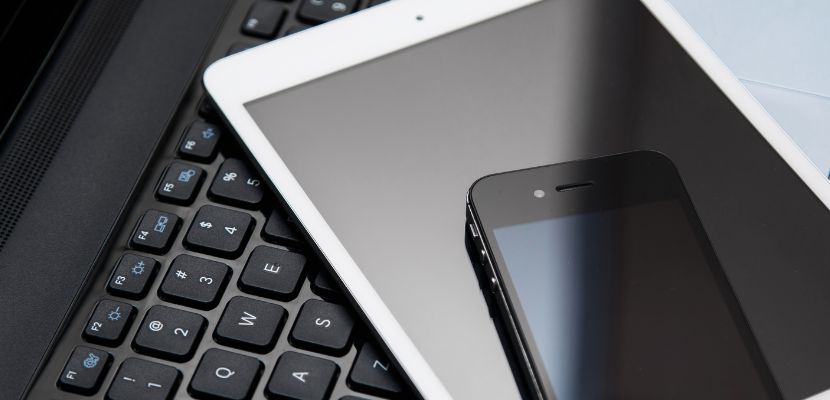Rugged devices are built to withstand harsh environments, offering durability and reliability where standard electronics fall short. Designed for extreme conditions, these devices are essential for industries like construction, manufacturing, and field services.

What Are Rugged Devices?
Rugged devices are specialized electronic equipment designed to operate reliably in demanding environments where conventional devices are prone to failure. They are engineered with enhanced durability features, such as reinforced casings, impact-resistant screens, and protection against dust, water, extreme temperatures, and vibrations. These devices undergo rigorous testing to meet industry standards like IP (Ingress Protection) and MIL-STD (Military Standard) certifications, ensuring their ability to withstand the physical and environmental challenges they are exposed to.
Rugged devices are commonly used in industries such as construction, logistics, manufacturing, and field services, where the ability to function consistently in harsh conditions is critical. Beyond their durability, they often include advanced technological capabilities tailored to the unique requirements of their users, such as extended battery life, enhanced connectivity options, and compatibility with industry-specific software, making them a dependable solution for both productivity and safety in tough working conditions.
Types of Rugged Devices
Rugged devices come in various forms, each tailored to meet the unique demands of different industries and applications. From handhelds to larger equipment, these devices are categorized based on their functionality and form factor, ensuring reliability in diverse environments.
Rugged Smartphones
Rugged smartphones are designed for individuals working in environments where durability is crucial. They feature reinforced exteriors, shatter-resistant screens, and water and dust protection. Many models offer enhanced features such as push-to-talk capabilities, thermal imaging, or compatibility with field-specific software. They are ideal for construction, logistics, and emergency services.
Rugged Tablets
Rugged tablets combine portability with a larger display, making them suitable for data-intensive tasks in challenging environments. They are commonly used in industries like warehousing, utilities, and public safety. These devices often include features such as stylus support, advanced connectivity (e.g., LTE, GPS), and extended battery life to meet the demands of field operations.
Rugged Laptops
Designed for heavy-duty computing in tough conditions, rugged laptops are equipped with shock-absorbent materials, sealed ports, and spill-resistant keyboards. They are frequently used by military personnel, first responders, and engineers in the field. These devices often meet military-grade standards for impact and temperature resistance while offering high processing power.
Rugged Wearables
Rugged wearables, such as smartwatches or head-mounted displays, are built for hands-free operation in environments where mobility is key. They are often used in logistics, manufacturing, and healthcare to enhance productivity and provide real-time data access while keeping workers' hands free for tasks.
Rugged Scanners and Handhelds
These devices are compact and purpose-built for inventory management, logistics, and retail applications. Rugged handheld scanners and data terminals are optimized for barcode or RFID scanning, offering durability and efficiency.
Rugged IoT Devices
Rugged IoT devices are specialized sensors, cameras, or monitoring systems designed for deployment in harsh industrial settings. They enable real-time data collection and connectivity in environments such as oil rigs, manufacturing plants, and outdoor surveillance, where standard IoT devices would fail.
Rugged Devices Examples

Here are some examples of rugged devices commonly used in various industries:
- Panasonic Toughbook Series. Panasonic Toughbooks are rugged laptops and tablets known for their durability and high performance. They are designed to withstand drops, extreme temperatures, and harsh environmental conditions, making them popular in military, law enforcement, and field service applications.
- Samsung Galaxy XCover Series. The Galaxy XCover series includes rugged smartphones built to handle tough environments. These devices offer IP68 water and dust resistance, military-grade durability (MIL-STD-810G), and features like programmable keys for quick access to critical functions.
- Zebra TC7x Series Handhelds. The Zebra TC7x series consists of rugged handheld computers used in warehousing, logistics, and retail. They combine barcode scanning, mobile computing, and enterprise-grade durability, ensuring reliable performance in demanding operations.
- Dell Latitude Rugged Extreme Laptops. Dell's Latitude Rugged Extreme laptops are engineered for professionals working in extreme conditions, such as field engineers and emergency responders. These laptops feature shock-absorbent exteriors, sealed keyboards, and advanced connectivity options.
- CAT S62 Pro Smartphone. The CAT S62 Pro is a rugged smartphone with an integrated FLIR thermal imaging camera, perfect for industries like construction, utilities, and maintenance. It offers IP68 and IP69 ratings, ensuring resistance to water, dust, and drops.
- Getac F110 Tablet. The Getac F110 is a fully rugged tablet built for industries like public safety, transportation, and defense. It features a lightweight design, MIL-STD-810H certification, and advanced security features, making it ideal for fieldwork.
What Are the Features of Rugged Devices?
Rugged devices are designed to perform reliably in harsh environments, equipped with specialized features that enhance their durability, functionality, and adaptability. Here are the key features of rugged devices:
- Durability and impact resistance. Rugged devices are built with reinforced exteriors, shock-absorbent materials, and impact-resistant components. They can survive drops, rough handling, and collisions, ensuring uninterrupted performance in challenging conditions.
- Water and dust protection. Most rugged devices are rated with IP (Ingress Protection) certifications, such as IP67 or IP68, indicating their ability to withstand dust infiltration and immersion in water. This makes them ideal for outdoor or industrial settings where exposure to these elements is common.
- Extreme temperature tolerance. These devices are designed to operate in extreme temperatures, ranging from freezing cold to intense heat, making them suitable for environments like construction sites, arctic expeditions, or desert operations.
- Long battery life. Rugged devices often feature extended battery life or swappable batteries, ensuring they can function for long hours without recharging, even in remote locations.
- Enhanced connectivity. They support advanced connectivity options, including 4G/5G, Wi-Fi, Bluetooth, GPS, and sometimes satellite communication. This ensures reliable data transmission and location tracking in areas with limited connectivity.
- Sealed and resistant ports. To prevent damage from dust, water, or debris, rugged devices have sealed ports and connectors. This design protects critical components and enhances device longevity.
- Sunlight-readable displays. Rugged devices often feature high-brightness screens with anti-glare coatings, enabling users to view the display clearly even under direct sunlight.
- MIL-STD-810 compliance. Many rugged devices meet or exceed military-grade standards (MIL-STD-810), which include rigorous tests for resistance to shocks, vibrations, humidity, altitude, and more.
- Customizable and industry-specific features. They may include specialized tools like barcode scanners, RFID readers, thermal imaging cameras, or programmable buttons tailored to specific industry requirements.
- Secure and robust operating systems. Rugged devices often come with enterprise-grade operating systems and enhanced security features, such as biometric authentication, encryption, and remote management capabilities.
What Are Rugged Devices Used For?
Rugged devices are used in industries and scenarios where standard consumer electronics cannot withstand the environmental and operational challenges. They are specifically designed to deliver reliable performance in harsh conditions, making them essential tools for a wide range of applications:
- Field services. Rugged devices are widely used by field service professionals such as technicians, engineers, and inspectors. They facilitate tasks like data entry, diagnostics, and communication in remote locations or challenging weather conditions.
- Construction and engineering. In construction and engineering, rugged devices help workers access blueprints, monitor progress, and communicate on-site. Their durability ensures reliable operation despite exposure to dust, vibrations, and drops.
- Logistics and warehousing. Rugged handhelds and scanners are essential in logistics for inventory management, barcode scanning, and tracking shipments. They withstand frequent handling and temperature changes in warehouses and transportation.
- Manufacturing and industrial settings. In manufacturing, rugged devices monitor equipment, collect production data, and support quality control processes. They can handle the heavy-duty demands of industrial environments, such as exposure to chemicals, moisture, and heat.
- Military and defense. Rugged devices are indispensable in military operations, where they are used for navigation, communication, and data analysis. Their ability to operate under extreme temperatures, high altitudes, and rough handling makes them mission-critical tools.
- Public safety and emergency services. Emergency responders and law enforcement rely on rugged devices for real-time communication, data access, and situational awareness. These devices ensure reliability in life-or-death scenarios, even in extreme weather or disaster zones.
- Utilities and energy. In the utilities and energy sectors, rugged devices help with infrastructure inspection, maintenance, and asset management. Workers in power plants, oil rigs, and wind farms benefit from their durability and advanced features.
- Outdoor and adventure applications. For outdoor enthusiasts, researchers, and explorers, rugged devices provide navigation, communication, and data recording in remote and challenging terrains, from mountains to deserts.
- Healthcare. Rugged tablets and handhelds are used in healthcare settings, particularly in ambulances and mobile clinics. They ensure reliable access to patient records, diagnostic tools, and telemedicine platforms in demanding environments.
- Retail and point-of-sale (POS) systems. In retail settings, rugged devices like handheld scanners and tablets are used for inventory management and as POS systems in stores or outdoor markets, withstanding constant use and exposure to the elements.
Are There Any Disadvantages of Using Rugged Devices?
While rugged devices are designed to excel in demanding environments, they do have some disadvantages that may affect their suitability for certain users or applications:
- Higher cost. Rugged devices are typically more expensive than standard consumer-grade electronics due to their specialized design, durability features, and certification processes. The upfront cost can be a significant barrier, especially for small businesses or individual users.
- Bulkier and heavier design. To achieve durability, rugged devices often have reinforced exteriors, which make them bulkier and heavier than their consumer counterparts. This can reduce portability and comfort for users.
- Performance trade-offs. Some rugged devices may lag behind consumer electronics in terms of processing power, display quality, or camera resolution, as the focus is on durability rather than cutting-edge specs. However, this varies depending on the model and manufacturer.
- Compatibility and software limitations. Certain rugged devices use proprietary operating systems or hardware, which might limit their compatibility with consumer applications or peripherals. Additionally, enterprise-specific software may require customization or additional licensing.
- Maintenance and repair challenges. Although rugged devices are built to last, repairing them can be more expensive and time-consuming than standard devices. Replacement parts may be less readily available, and repairs often require specialized service centers.
- Learning curve for new users. Rugged devices often include industry-specific features and tools that may require additional training for users to operate effectively.
- Over-engineering for certain use cases. For users in less demanding environments, the durability of rugged devices might be excessive, leading to unnecessary costs and features that are not fully utilized.